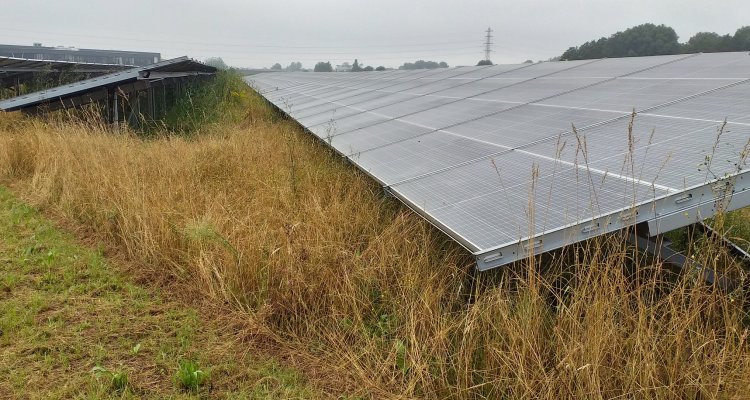
Project
Towards biodiverse solar parks
In October 2020, the Zonnepark Revelhorst located between the Boggelder Enk and the Lansinkweg in Zutphen just south of the Rondweg N314 in Zutphen was opened. This 6-ha park, enclosed with strong fencing, is located on an old corn field. It contains more than 20,000 solar panels, with a total capacity of 8.2 MW.
Alderman Harry Metser opened the park in 2020 and called the way Zutphen Energy works "an example for the Netherlands”. Because Zutphen residents did not have to invest in the expensive solar panels themselves. Thanks to a loan from the municipality of Zutphen, Zutphen Energy was able to buy the solar panels itself. In addition, participants also receive a 5-cent discount per kilowatt hour. With an average consumption of 2400 kilowatt-hours, this discount can amount to 120 euros per year. With this attractive price-cost ratio, the energy cooperative hopes to help people with a small budget. Zutphen has 1400 households living on social security payments. 500 households now receive electricity from this solar farm.
As everywhere in the Netherlands, the question arises what effect such a park will have on biodiversity at this location and perhaps beyond. There is no immediate answer to that. Zutphen Energy is interested in answering this question through thorough monitoring. And monitoring is not possible if there is no good overview of the initial situation. Hence the need for a baseline measurement of biodiversity on site. Zutphen Energy is the local Energy Cooperative in Zutphen dedicated to Energy Transition in the broadest sense of the word. As a citizens' initiative, Zutphen Energy made contact with the WUR Science Shop. The request was to answer the questions surrounding inventorying, monitoring and managing biodiversity in the solar park through a project by the science shop.
This project of the science shop should contribute to well considered choices being made, supported by the parties involved, and that this is elaborated in a management plan and a monitoring plan. In addition to ecological input, it is therefore also emphatically about a sense of social relationships and attention to (municipal) nature policy.
Research results:
The main conclusion of the ecological research is that the current biodiversity of the solar park is low. Prior to the solar park, the site was used as agricultural land and the effects of this, in the form of an excess of nitrogen and phosphate, prevent an increase in natural values. In order to increase biodiversity, it is therefore first recommended to implement an impoverished hay management. A difference can already be made with the impoverished hay management and by sowing locally sourced seeds in small quantities.
Additional management measures are also discussed and a plan to continue monitoring the solar park has been added. The various parties and their roles around the solar park are discussed and advice is given on how their mutual cooperation can be improved.
As a result of the study, cooperation between Zutphen Energy, the IVN and the Zutphen Bird Project Group has been improved and intensified.